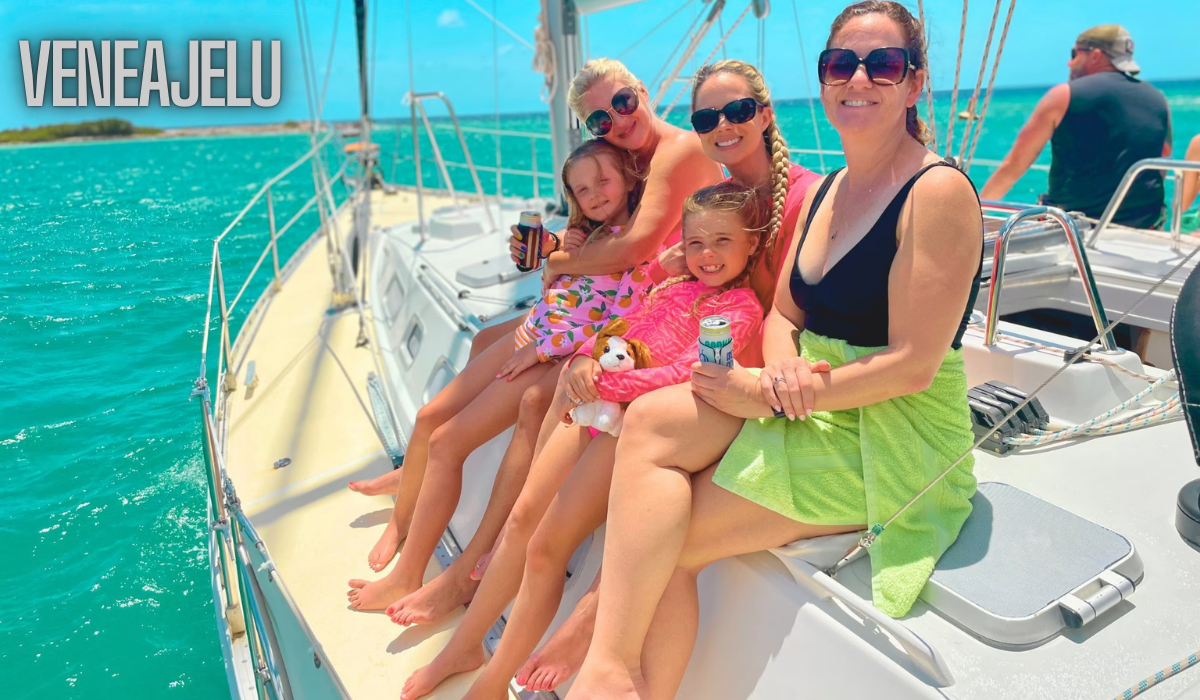In Finland, a country defined by its countless lakes, winding rivers, and proximity to the Baltic Sea, life is deeply connected to water. The Finnish word “veneajelu” captures this connection perfectly—it simply means a boat ride or boating trip.
But veneajelu is far more than just transportation. It is an experience, a tradition, and in many ways, a way of life. Veneajelu embodies the Finnish way of life, whether it’s a quiet lakeside rowboat trip in the evening, a family motorboat trip, or a sailing adventure in the midnight sun. spirit of harmony with nature. The Finnish word may translate simply to “boat ride,” but it carries much deeper meaning. It represents a tradition rooted in Finland’s geography, culture, and lifestyle.
For Finns, veneajelu is part of their identity. It provides visitors with a glimpse into the heart of Finland. And for everyone, it is a reminder of the beauty found when we slow down, step into a boat, and let the water carry us forward.
The Geography That Shapes Veneajelu
Finland is often called “the land of a thousand lakes”—but the reality is far more staggering. The country has over 188,000 lakes and an equally impressive number of islands and rivers. This abundance of waterways naturally shaped how Finns interact with their surroundings. For centuries, lakes and rivers were used for fishing, transportation, and trade. Today, while modern infrastructure connects the nation, the tradition of boating remains central.
Veneajelu reflects this geography. It is not restricted to one form of boating but can mean anything from paddling a small canoe across a forest-lined lake to cruising in a motorboat through an archipelago. Each region of Finland has its own relationship with water, and veneajelu adapts to these environments.
The Cultural Meaning of Veneajelu
In Finnish culture, silence and closeness to nature are deeply valued. Veneajelu offers both. Floating across a still lake in the late evening, with only the sound of oars dipping into the water, reflects the Finnish ideal of rauha—peace. Families often gather for weekend outings by boat, strengthening bonds across generations.
The tradition also ties into seasonal life. In summer, when the sun barely sets in the north, boating trips can last deep into the night. During early autumn, veneajelu becomes a way to enjoy the colorful transformation of nature. Even in winter, when lakes freeze solid, people sometimes take sleds or snowmobiles across the same waters they rowed or sailed on months before.
Different Types of Veneajelu
While the core idea of veneajelu is simple—taking a boat ride—it comes in many forms.
1. Rowing on the Lakes
Perhaps the most traditional form is rowing on calm inland lakes. Many Finnish cottages, or mökki, come with a small wooden or aluminum rowboat tied up at the dock. Families use these boats to fish, to fetch water from the lake, or simply to enjoy a quiet trip after sauna.
2. Motorboating Adventures
For those living by larger lakes or coastal areas, motorboats offer the ability to travel further. Families often use them for day trips, picnics on small islands, or exploring hidden coves. For children, these rides are often a treasured memory of summer holidays.
3. Sailing in the Archipelago
The southern coast of Finland is dotted with tens of thousands of islands, forming one of the most complex archipelagos in the world. Here, veneajelu often means sailing. Navigating between islands, setting anchor in secluded bays, and cooking a meal on deck under the midnight sun captures the adventurous side of boating.
4. Canoeing and Kayaking
For nature enthusiasts, veneajelu can also mean paddling quietly in a canoe or kayak. This form is especially popular in national parks, where visitors can glide through narrow waterways, surrounded by untouched forests and wildlife.
The Social Aspect of Veneajelu
Veneajelu is rarely a solitary activity. It is often shared with family, friends, or even neighbors. A typical summer day might include preparing food, packing supplies, and setting off together to a nearby island. Once there, Finns light a fire, grill sausages, drink coffee from thermos flasks, and enjoy simple but meaningful togetherness.
At the same time, veneajelu also allows space for solitude. Many Finns value being alone in nature, and a quiet solo trip by boat can be a form of meditation. It is this balance between community and individual peace that makes veneajelu so special.
The Symbolism of Water and Movement
Water has always been a symbol of renewal, reflection, and life itself. In Finland, where water is everywhere, veneajelu becomes a symbolic journey as much as a physical one. The act of drifting forward, letting the waves guide you, mirrors the Finnish respect for nature’s rhythms.
For many, stepping into a boat means leaving behind stress and noise. The water provides a sense of perspective, reminding us of both our smallness and our connection to something vast and timeless.
Veneajelu in Finnish Identity
Ask any Finn about childhood memories, and many will recall boat rides at the family cottage, fishing trips with grandparents, or adventures through the archipelago. Veneajelu is woven into identity, much like sauna or midsummer celebrations.
For visitors to Finland, experiencing veneajelu is one of the most authentic ways to understand the culture. It is not staged or commercial—it is a natural part of life, offered by geography and embraced by tradition.
Modern Veneajelu: Balancing Tradition and Sustainability
In recent years, sustainability has become an important aspect of boating. Electric motors are replacing older fuel-powered engines, and many Finns prefer rowing, sailing, or paddling to reduce environmental impact. Respecting nature is at the core of the Finnish lifestyle, and veneajelu is no exception.
National parks and local communities also encourage responsible boating, such as avoiding waste, protecting wildlife habitats, and keeping waters clean. This reflects a larger truth: veneajelu is not just recreation but a responsibility to maintain the bond between people and nature.
FAQs About Veneajelu
1. What does the word “veneajelu” mean?
The word veneajelu is Finnish and literally translates to “boat ride” or “boating trip.” However, it also carries cultural meaning, symbolizing tradition, relaxation, and harmony with nature.
2. Is veneajelu only about rowing?
No. Veneajelu can involve rowing, motorboating, sailing, canoeing, or kayaking. It simply refers to the act of taking a boat ride, no matter the type of boat.
3. Why is veneajelu so important in Finland?
Finland’s landscape is dominated by lakes, rivers, and coasts. Boating has historically been essential for survival and transport. Today, it is cherished as a way to enjoy nature, connect with family, and celebrate Finnish traditions.
4. Can tourists in Finland experience veneajelu?
Yes. Many cottage rentals include boats, and national parks often offer canoe or kayak rentals. There are also guided sailing trips in the archipelago. For visitors, veneajelu is one of the best ways to experience Finnish nature.
5. Is veneajelu connected to Finnish well-being?
Absolutely. Spending time on the water is calming, reduces stress, and promotes mindfulness. Many Finns see veneajelu as a natural extension of their wellness practices, much like sauna or forest walks.
Conclusion
Veneajelu is more than just a boat ride—it is a reflection of Finland’s geography, traditions, and way of life. It symbolizes peace, togetherness, and respect for nature. Whether it’s a quiet row across a lake, a lively family outing to an island, or a sailing journey under the midnight sun, veneajelu remains at the heart of the Finnish soul.
For those who experience it, veneajelu is not easily forgotten. It becomes a memory carried forward—like the gentle movement of a boat across water—reminding us of the beauty in slowing down and letting nature guide us.

